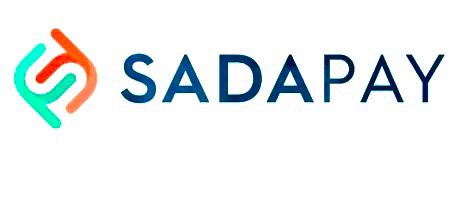Learning a new language is an exciting challenge , a journey that opens your mind to new cultures, new ways of thinking, and new opportunities. The Arabic language is one of the most fascinating in the world. With over 400 million speakers and a rich history that spans thousands of years, it connects you to diverse communities across the Middle East, North Africa, and beyond.
For non-native speakers, learning Arabic can seem intimidating at first. The script is different, the sounds are unique, and the grammar is unlike English or other European languages. But with the right guidance and a clear plan, anyone can master it.
This step-by-step guide will walk you through the process, from setting your goals to speaking confidently. Whether you want to read the Quran, travel, work, or simply learn for personal enrichment, this guide will give you a solid starting point.
Step 1: Define Your Purpose
Before you open a textbook or start watching videos, ask yourself why you want to learn Arabic. Your motivation will guide your approach and keep you going when the process feels difficult.
Do you want to understand the Quran? Then Arabic Quran courses might be your focus. Are you learning for work or travel? Then conversational Arabic might take priority. Your reason will influence what vocabulary you learn first, how you study, and which resources you choose.
A clear goal also helps you measure progress. For example:
- “I want to read and understand short Quranic verses within 6 months.”
- “I want to be able to introduce myself and hold a simple conversation in Arabic before my trip.”
Step 2: Choose the Right Dialect
Arabic is not just one language , it has many varieties. Modern Standard Arabic (MSA) is the formal version used in books, news broadcasts, and the Quran. Dialects, like Egyptian, Levantine, or Gulf Arabic, are used in daily conversation and vary from country to country.
If you’re a beginner, it’s best to start with MSA. It gives you a strong foundation for reading and writing, and it’s understood across the Arab world. Later, if you want to live or work in a specific region, you can pick up the local dialect.
Step 3: Get the Right Learning Resources
There’s no shortage of Arabic language courses today. You can choose from apps, YouTube channels, textbooks, podcasts, and Arabic language online courses with live teachers.
If you’re serious about learning, combine different resources:
- Apps for daily practice and vocabulary.
- Books for grammar and reading skills.
- An Arabic teacher for guidance, corrections, and conversation practice.
Self-study is useful, but having someone correct your mistakes early on prevents bad habits and speeds up your progress.
Step 4: Learn the Alphabet and Sounds
The Arabic alphabet has 28 letters and is written from right to left. At first, it might look complex, but with daily practice, you’ll get used to it quickly. Focus on two things in this stage:
- Recognizing letters in all positions (beginning, middle, and end of words).
- Pronouncing sounds correctly, especially the ones that don’t exist in English.
Spend at least a week or two mastering the script before diving into words and sentences. This foundation will make the rest of your learning much smoother.
Step 5: Build Basic Vocabulary
Start with the essentials , greetings, numbers, days of the week, and simple verbs. If your aim is religious study, begin learning words that appear often in the Quran. If your aim is conversation, focus on daily life terms: food, travel, and common expressions.
Use flashcards or spaced repetition apps to remember words. Write them down, say them aloud, and try to use them in sentences.
Step 6: Practice Listening and Speaking from Day One
It’s tempting to focus on reading and writing first, but language is about communication. Listen to Arabic music, news, or podcasts, even if you don’t understand much at first. Your brain will start recognizing patterns and sounds.
If possible, join online classes Arabic where you can speak with native speakers. Speaking out loud, even with mistakes, is the fastest way to gain confidence.
Step 7: Learn Grammar Slowly and Steadily
Arabic grammar can seem complicated because it’s very different from English. Nouns have gender, verbs change form depending on the subject, and the root system means many words are connected.
Instead of trying to learn everything at once, focus on one topic each week , for example:
- Week 1: How to form plurals.
- Week 2: Past tense verbs.
- Week 3: Using the definite article “Al-”.
Structured Arabic language online courses often guide you through grammar in manageable steps so you don’t feel overwhelmed.
Step 8: Immerse Yourself in the Language
Immersion is one of the most powerful learning methods. Even if you can’t travel, you can create an Arabic-rich environment at home:
- Change your phone or social media language to Arabic.
- Label household objects with their Arabic names.
- Watch Arabic TV shows or movies with subtitles.
Over time, your brain will start to think in Arabic without conscious effort.
Step 9: Review and Reinforce
It’s easy to forget vocabulary or grammar if you don’t use them regularly. Review past lessons weekly. Use quizzes, write short paragraphs, or have casual chats with your Arabic teacher to keep your skills fresh. Repeating what you’ve learned is not a waste of time, it’s the key to long-term retention.
Step 10: Stay Patient and Consistent
Arabic is a rewarding language, but it’s not learned overnight. Consistency matters more than speed. Even 15 minutes a day is better than a long session once a week.
Celebrate small wins , reading a street sign, understanding a phrase in a song, or completing a Quranic verse without help. These moments keep you motivated.
Putting It All Together
Here’s a quick summary of the process:
- Set your goals.
- Pick a starting dialect (usually MSA).
- Gather the right resources.
- Learn the alphabet and sounds.
- Build essential vocabulary.
- Practice listening and speaking early.
- Study grammar step-by-step.
- Immerse yourself daily.
- Review regularly.
- Be patient and consistent.
Learn Arabic with Certified Teachers Anywhere in the World
While self-study can get you far, there’s nothing like personalized guidance. Our platform offers one-on-one live classes with certified Arabic teachers from across the globe. Whether you want conversational skills, deep Quranic study, or a structured beginner course, we tailor each lesson to your needs.
You’ll have the flexibility of Arabic language courses from the comfort of your home, the personal attention of a dedicated teacher, and the motivation of real-time progress. Plus, our Arabic Quran courses are perfect for students who want to connect spiritually while improving their language skills.
FAQs
How long does it take for a non-native speaker to learn Arabic?
The time varies depending on your goals, learning style, and dedication. With consistent effort and structured guidance, many learners can hold basic conversations within 6–12 months.
Which is better for beginners , Modern Standard Arabic or dialects?
Modern Standard Arabic (MSA) is ideal for beginners because it’s used in formal settings, media, and the Quran. Once you’re confident, you can pick up a regional dialect for daily conversations.
Can I learn Arabic online effectively?
Yes. Many students achieve fluency through Arabic language online courses with live interaction, homework support, and native-speaking teachers.
Do I need an Arabic teacher to learn the language?
While self-study can help you get started, working with an Arabic teacher ensures correct pronunciation, faster progress, and personalized feedback.






